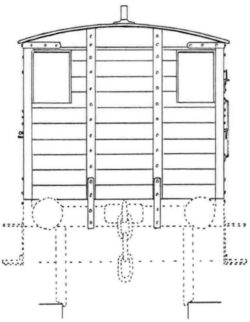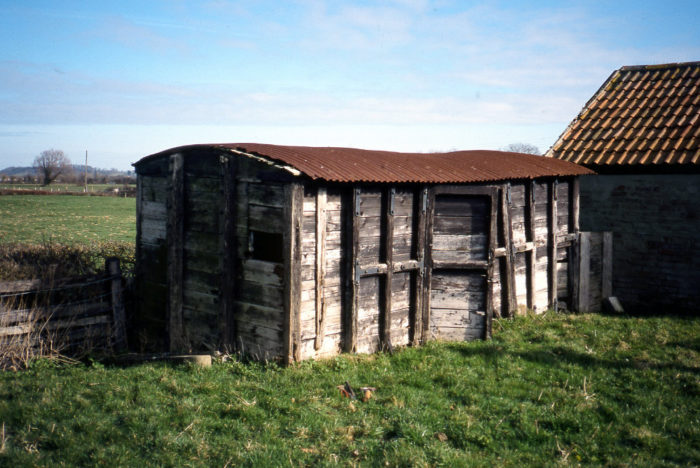
During the late 19th century, Highbridge Works built ‘mail brakes’; specialised goods vans intended primarily for the main line between Bath and Bournemouth. However, on the branches, a shorter vehicle was used.
During the early 1980s, Steve Ehrlicher had spotted a chassis-less van near Highbridge (pictured above) while on train journeys between Bath and Exeter. Viewing the van with the owner’s permission, it was found to still having the markings ‘S&DJR Wells Branch No.9’. Steve concluded that the van had probably been built at Highbridge in the early- to mid-1870s – rather earlier than the ‘mail brakes’ – and had stayed in service until 1929 when it moved to its new home. The odd thing, says Steve, is that there are no photos of these vehicles.
Ultimately, the van was moved to Washford in flat-pack form, and there it has remained. However, this week, all the parts of the van were laid out for viewing.
Below the photos, we have included Steve’s article from a 1988 issue of our magazine.
[Photos below by David Temple.]
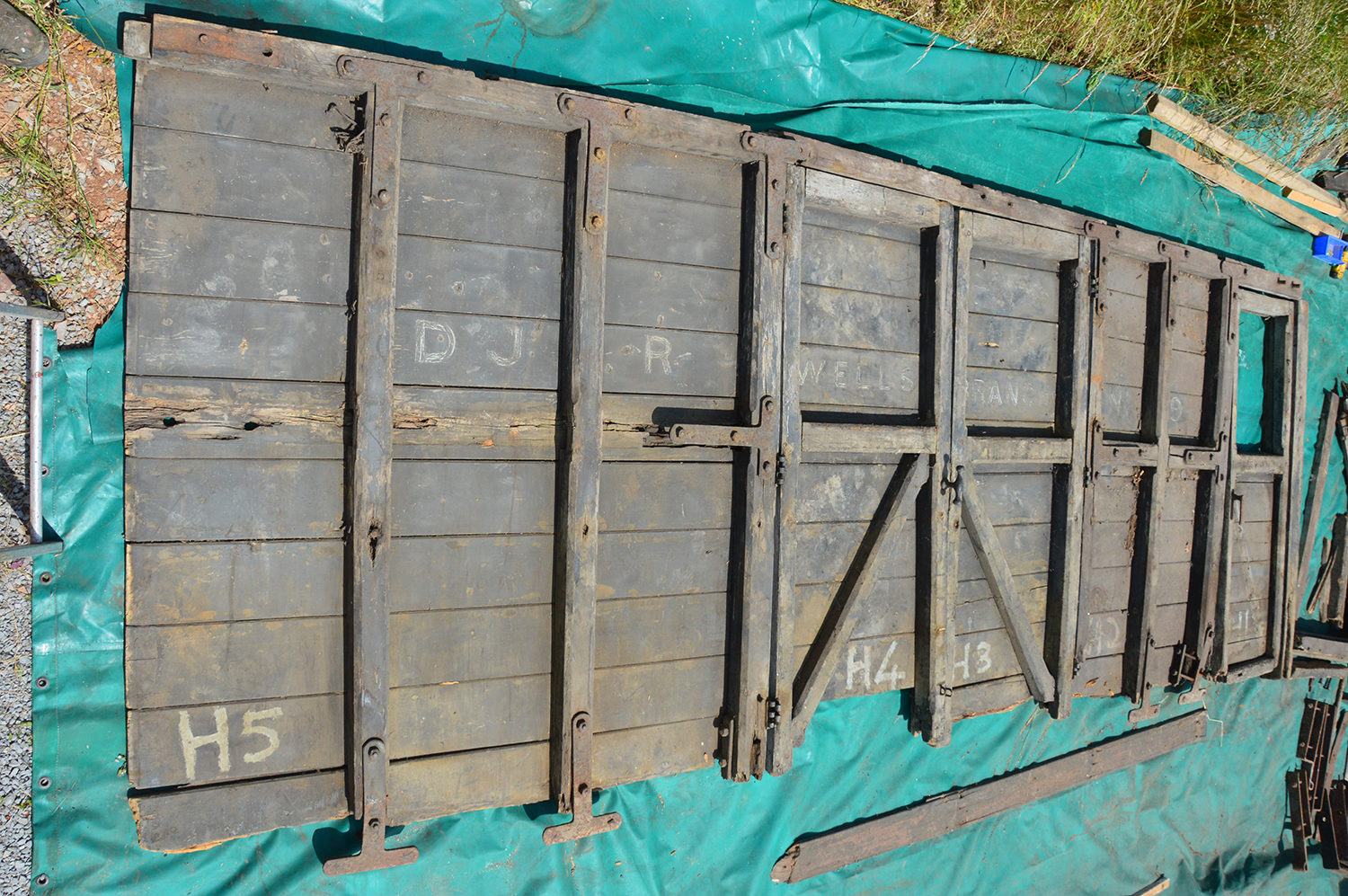
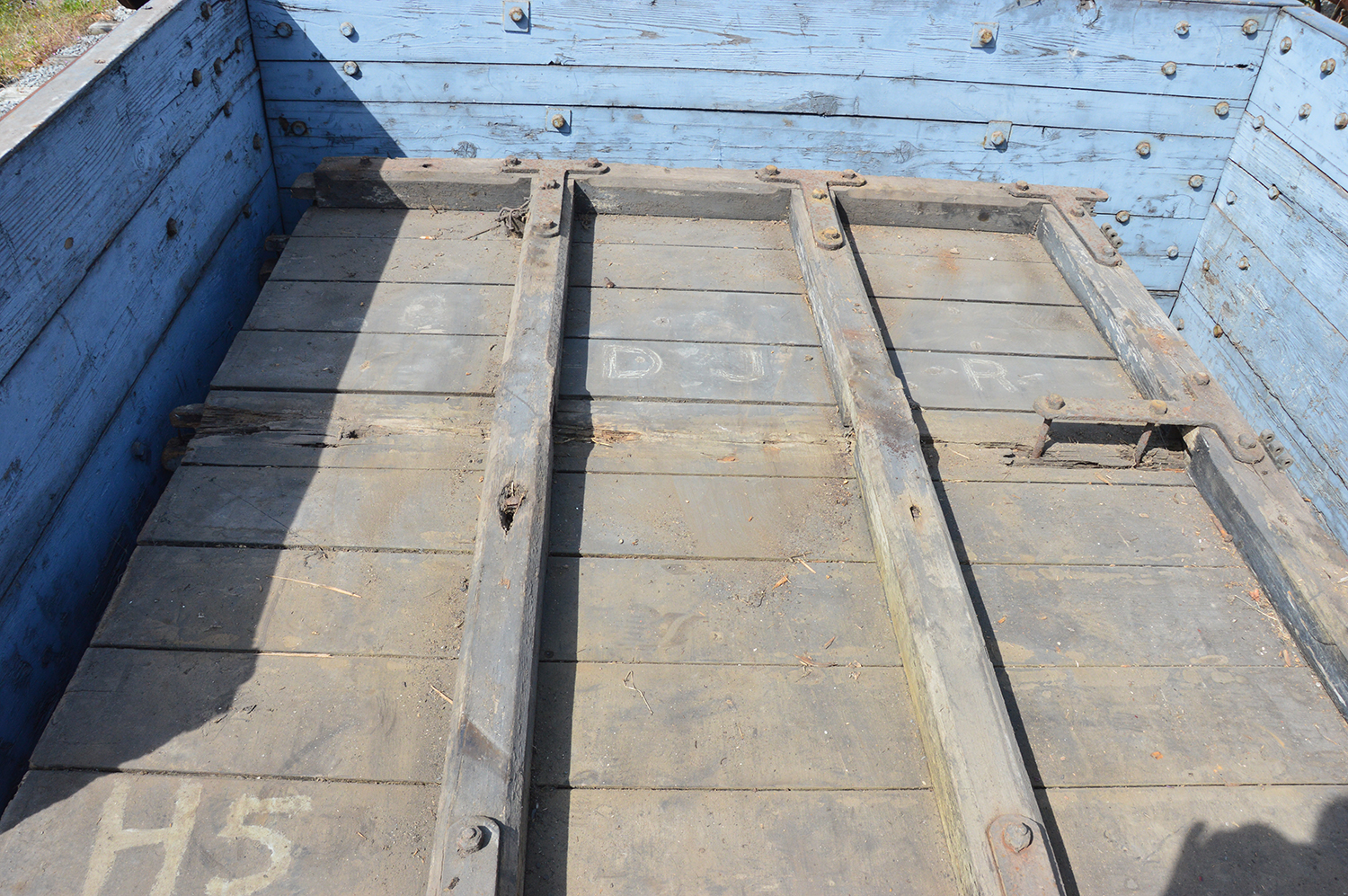
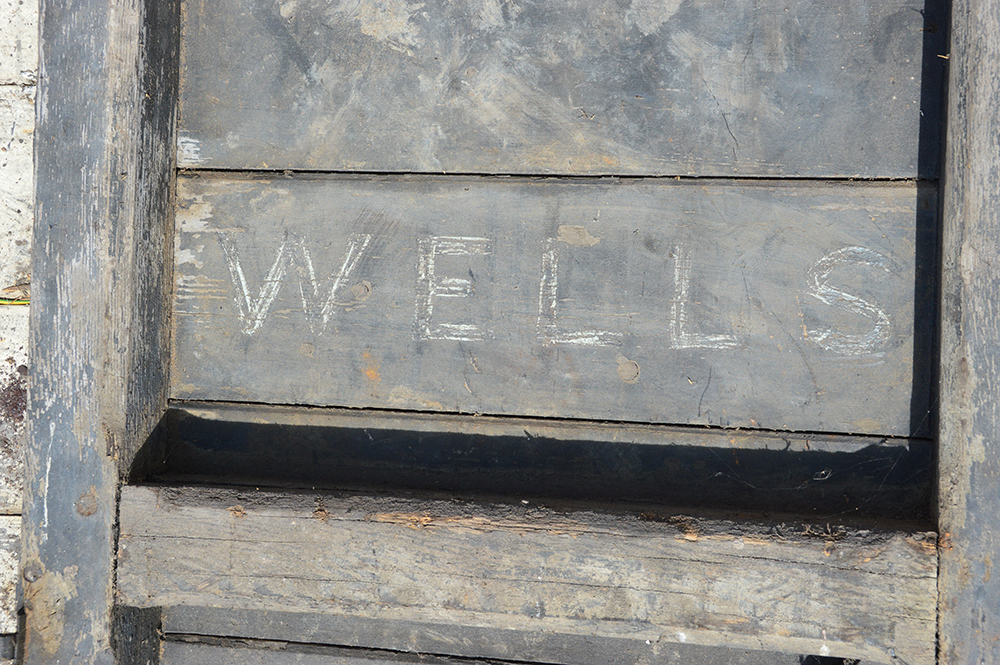
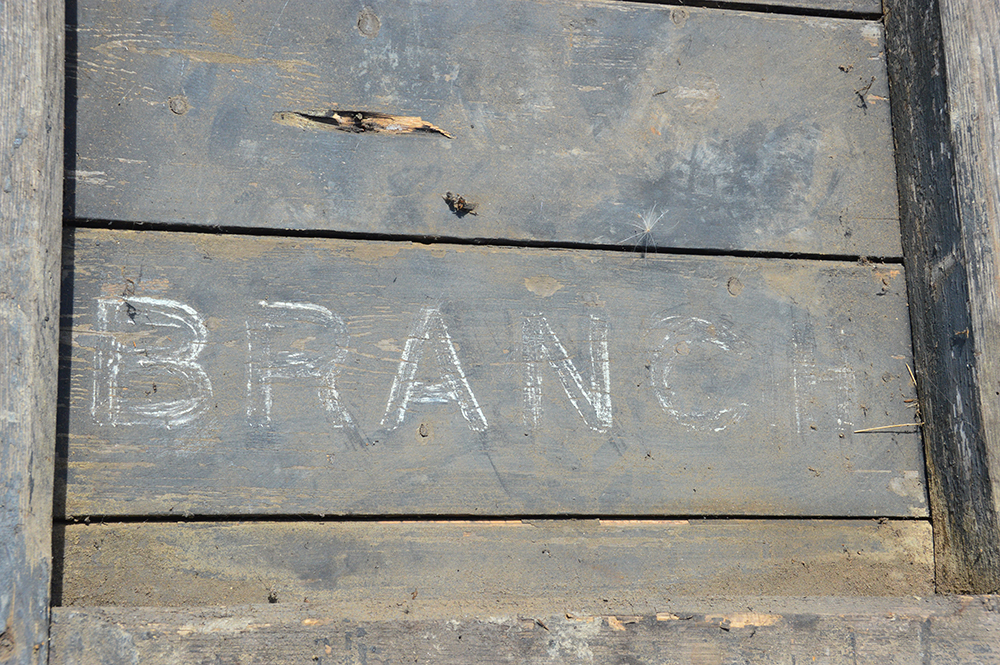
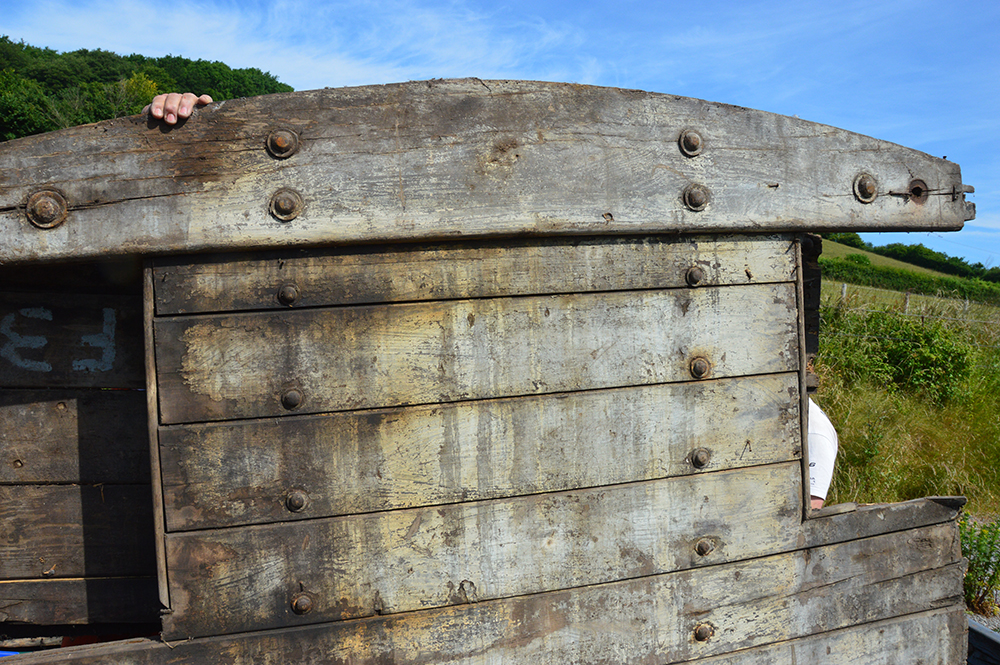
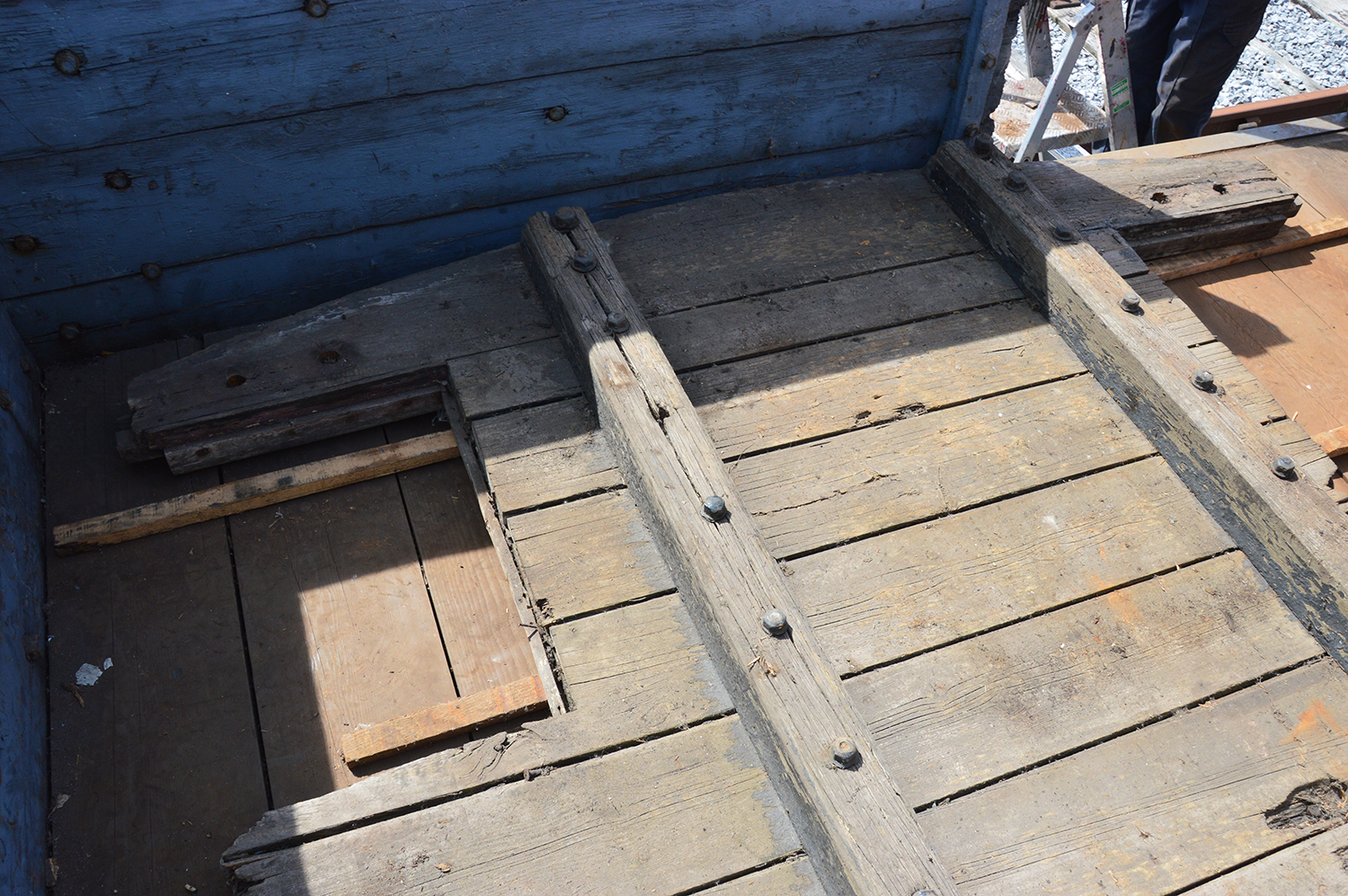
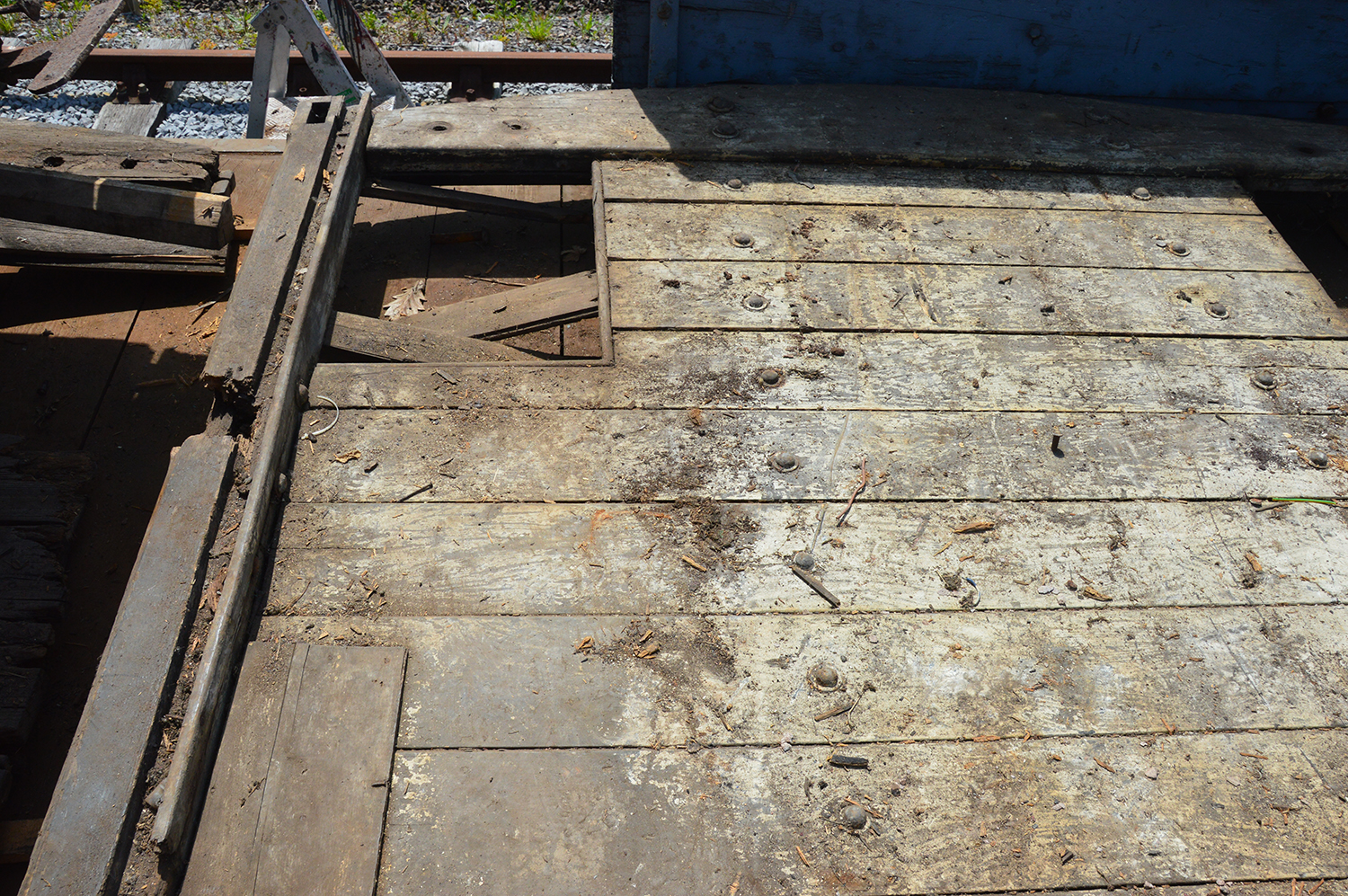
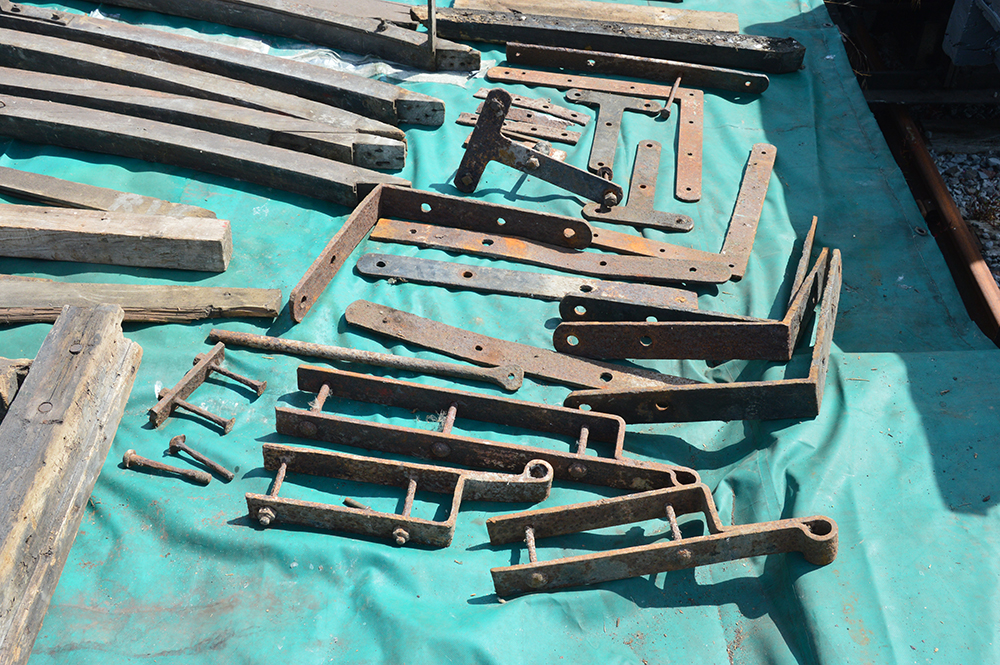
S&D No.9 – a suitable case for treatment?
By Steve Ehrlicher.
Published in S&DRT Bulletin no. 146 – June/July 1988.
A subsequent article by Steve on this subject appeared in issue 52 of the S&D Telegraph.
From various publications and photographs, we can acquaint ourselves with the specialised vehicles built for the transport of valuable goods on the Somerset & Dorset, the Mail Brakes. These were six-wheel vehicles built at Highbridge in the late 19th century, primarily for use on the ‘main line‘ between Bath and Bournemouth. What is not so well documented is the service on the branches. How were they served?
A dip into the Oxford Publishing reprint of the 1920 Working Time Book shows us that a series of Road Vans were allocated to various workings and could, possibly, have fulfilled the branch needs without recourse to such specialised vehicles as ‘mail brakes‘.
And that’s an end to it, I thought. However, to my surprise, a light appeared at the end of the tunnel — and it wasn’t an oncoming train!
In the early 1980s, I travelled between Bath and Devon frequently. On odd occasions, when it wasn’t raining, I would note box van bodies in the countryside and promise myself further investigation at a later date. By chance. I was able to re-visit one such site near the birthplace of much S&D rolling stock, Highbridge. Having taken a few photographs and passed them around various people for comment, little extra information was forthcoming. I did have an inkling that something of interest had been discovered but filed the details away for another day. One thing did nag away in the back of my mind — the owner’s insistence that the word ‘Wells‘ appeared somewhere on the body prior to him re-painting it.
During correspondence with another Trust member, Mark Lees, I mentioned this body and he kindly offered to spend some time measuring it when he was next in the area. I recently rediscovered Mark’s notes and sketch and worked up a scale drawing. It didn’t feel quite right and so I decided to visit the site again with the purpose of collecting maximum information. A phone call to the owner confirmed it still existed and dates were set. I was well received by the owner and, following the usual pleasantries, I settled down to a long afternoon’s work.
The drawing below is the result. Heavy lines denote all that is left and broken lines show my guesswork. As you will see, it is, in effect, a shorter version of the six-wheel ‘mail brakes‘ and, judging by the construction, could pre-date them by at least ten years.
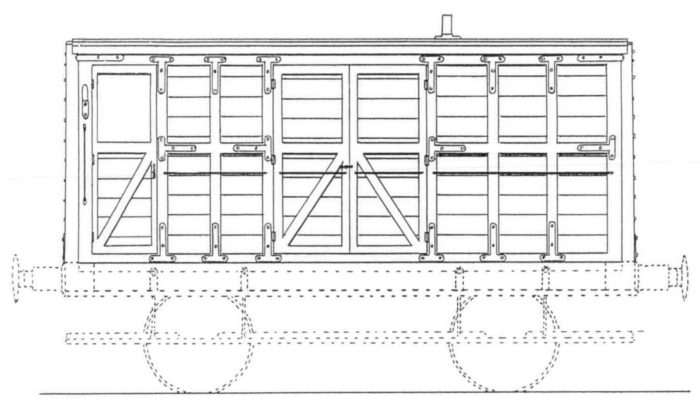

The overall length of the body is 16 feet, with end stanchions of 4½ inches, tapering to 3½ inches at the top, extra to this main dimension. Height to the centre of the roof, from the bottom of the known sides is 6 feet 6½ inches, with the actual sides being 6 feet 0½ inch high. The remains are extensive and the only items missing are the chimney, handrails, locking apparatus for the luggage doors, one Guard’s door, glass and – of course – a chassis.
I have assumed a wheelbase of 9 feet, but 9 feet 6 inches could have been just as possible. John Childs has redrawn a similar vehicle, built l873, from a Metropolitan Carriage & Wagon Co. original drawing, showing a 9 foot wheelbase, so this seems more likely. I have also guessed at the floor boards. It is possible that the top one ran only under the Guard’s doors. However. because of the handrail height, I think it probable that my interpretation is correct. The door handle on the goods section is of the early style as used on passenger carriages to circa 1876. The hinges are marked MR Co. There is no sign of any lighting apparatus in the roof. I can only assume that the branches always operated in the brightest of daylight.
It was after completely covering all measurements on the readily available surfaces that I struggled between the body and the hedge beside to discover – to my delight – the traces of the original lettering, as drawn. My guess is that this body was built at Highbridge in the early- or mid-1870s and was then in use until approximately 1929, when it was delivered to its present home.
I have used other photographs of the various brake vans owned by the Company to estimate the solebars as 1 foot deep and to suggest that heavy duty buffers would have been used. These estimates are supported by the Metropolitan C & H Brake Van drawing, previously mentioned.
Each end is identical and the drawing above shows the layout of the lettering on the other side. I cannot quite see how the lettering would work on the side with the Guard’s door on the left. There is another odd aspect to the body, as the lower right-hand side of the main drawing has panels cut away and replaced by some at a later date. Is it possible that there was a dog-box here? I was unable to see any form of divider internally at this point, but a better torch might elicit further information.
